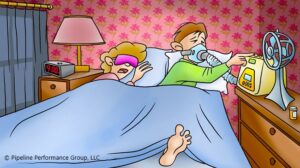My mother suddenly became very ill the day after Christmas. Her blood pressure and heart rate had been somewhat erratic for weeks. Could it be congestive heart failure? She was weak and struggling to breath normally.
It was time to get her to the hospital, so off to the emergency room we went. The doctors examined her and asked all the pertinent questions. They also thought congestive heart failure might be the cause of her symptoms. The diagnostic testing began in earnest.
An echocardiogram was done in her hospital room and I had the privilege of watching the entire thing. It’s a test that uses ultrasound to show how the heart muscle and valves are working. As the technician maneuvered the wand over Mom’s right side, I saw the valves of her heart opening and closing in a rhythmic pattern. It was truly awesome to see the constant rhythm of cardiac muscle as the valves opened and closed. The two sides appeared to “high five” each other as the valves opened and closed. I did a quick Google search to learn how many times they had “high fived” in the 87 years since her heart began to beat. What is 35 million times 87? I am astounded at the ability cardiac muscle has to continue on so consistently, with no rest. Absolutely astounding! The good news is that the tests revealed a well-functioning heart.
February is Heart Health Month. This time is designated for focusing on cardiovascular health and raising awareness about heart disease. It’s a topic worthy of our attention considering the fact that heart disease is the leading cause of death in the United States and the second leading cause of death in Canada, responsible for about 1 in every 4 deaths. Heart disease has various forms, the most common are arrhythmia, coronary artery disease, heart valve disease and heart failure.
The signs and symptoms of heart disease vary from person to person and can be different for men and women. The most common signs include pain in the chest, neck, jaw, throat, upper abdomen or back, shortness of breath, irregular heartbeat and/or fainting. If you believe someone close by is experiencing a heart attack, it’s imperative to call 911 immediately then begin cardiopulmonary resuscitation (CPR) if you’re trained and the person is unresponsive. CPR training is available online for a small fee. Taking the time to learn and prepare could help save someone’s life.
Cardiovascular disease may be prevented or risk factors diminished by making some lifestyle changes. In our January article, we looked at the best way to make lasting change – one step at a time. Here are a few steps you can take to begin improving your cardiovascular health today:
- Don’t smoke
- Eat living food / avoid highly processed food
- Stay hydrated with filtered water
- Walk more, spend time outside and practice strength training
- Manage stress, blood pressure and high cholesterol
- Practice good oral hygiene
- Get plenty of sleep
What one, small step can you take today that will put you on a trajectory for better heart health?
MANAGING FATIGUE EDUCATIONAL PROGRAM
Scarlet Knight © 2022 Please Distribute to Others.




